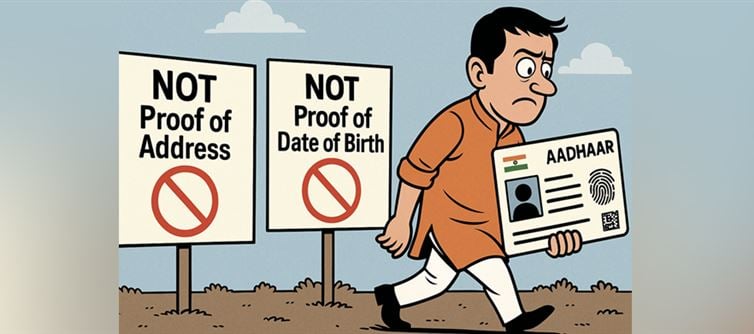
Aadhaar is the single most linked, most demanded, most overused document in india — and yet, somehow, it officially proves absolutely nothing. Not your address. Not your date of birth. Not your citizenship. Nothing. It’s the most aggressive, omnipresent ID in the country… that isn’t even technically an ID. And that’s exactly why millions keep asking the same burning question: Why do we even have it?
1. Aadhaar: The ID That Isn’t Actually an ID
Despite being shoved into every form, office, portal, scheme, and KYC requirement, Aadhaar shockingly isn’t a legally valid proof of address, age, or nationality.
Yet, it silently replaced PAN, voter ID, ration card, and even bank verification in practice.
It became the king without ever qualifying for the throne.
2. The Great Confusion Weapon — By Design or Accident?
Many believe Aadhaar was built as a psychological firewall against infiltrators.
Make one document look supreme, let outsiders chase it, but keep actual proofs separate.
A clever trap — but also a confusing mess for genuine citizens.
3. One Number to Track You… Everywhere
Aadhaar’s real strength?
Not proof.
Linkage.
It’s basically your permanent roll number in the indian system.
A universal tag that connects your subsidies, bank accounts, SIM cards, government schemes, income records, and movement across services.
Not to prove who you are, but to see what you do.
4. The Flaw Nobody Predicted: Trusting Humans
The system assumed operators wouldn’t:
fake entries
misuse machines
register non-citizens
bypass verification checks
But they did. And suddenly, the “most secure ID” started looking shockingly porous.
Technology was airtight. Humans were not.
5. Aadhaar Is Not a Citizenship Card — And That’s the Whole Problem
Most countries distinguish:
National ID = for citizens
Residence ID = for residents
India mashed everything into one giant identity blob, then refused to give it any legal weight.
The result?
A super-powerful ID that doesn’t certify the one thing the country fights over: citizenship.
6. Aadhaar Tried to Replace Every Document… But Ended Up Replacing None
The intention was bold:
“One ID to rule them all.”
But legal limitations crushed that dream.
Aadhaar couldn’t fully replace:
Passport
Voter ID
PAN
Driving License
Birth Certificate
Address Proof
So it became the awkward guest who’s invited to every party, but owns none of the houses.
7. The World Already Does This — india Just Did It the Loudest
Globally, most nations use a universal identity number that isn’t proof of citizenship.
Aadhaar is simply India’s version of that — just far more ambitious, far more centralised, and far more aggressively integrated into daily life.
8. In the End: Aadhaar Is a Tracking System, Not a Validation System
It doesn’t validate who you are.
It just identifies you so the system can track services, benefits, leaks, and usage.
Like a barcode.
Like a roll number.
Like a tracking tag on 1.4 billion people.
🔥 BOTTOM-LINE PUNCH
Aadhaar isn’t proof — it’s infrastructure.
A giant identity pipeline that powers everything while proving nothing.
It’s the most powerful “non-proof” document india has ever created… and maybe that was the plan all along.




 click and follow Indiaherald WhatsApp channel
click and follow Indiaherald WhatsApp channel